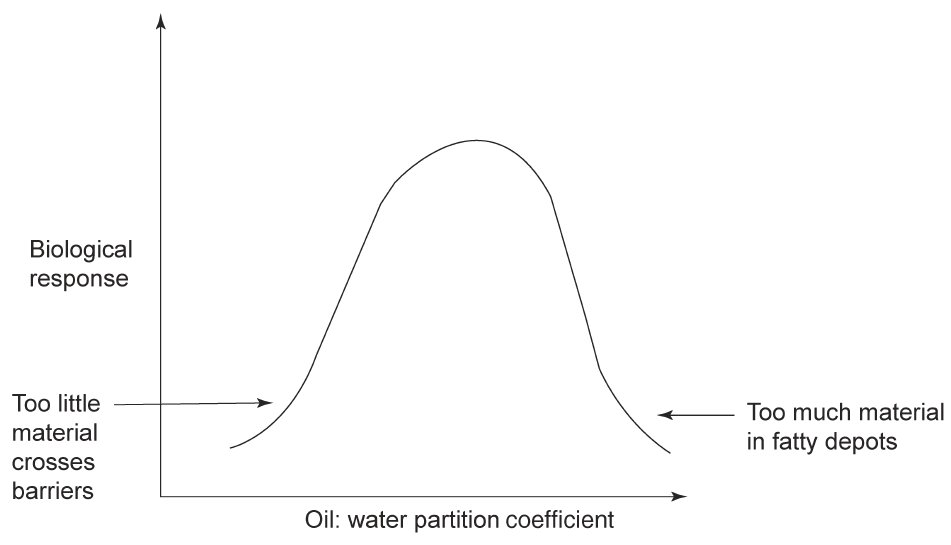
QUANTITATIVE STRUCTURE: ACTIVITY RELATIONSHIPS
 المؤلف:
James R Hanson
المؤلف:
James R Hanson
 المصدر:
Chemistry and Medicines
المصدر:
Chemistry and Medicines
 الجزء والصفحة:
p35
الجزء والصفحة:
p35
 29-3-2016
29-3-2016
 1320
1320
QUANTITATIVE STRUCTURE: ACTIVITY RELATIONSHIPS
Physico-chemical features associated with a structure such as polarity and hydrogen bonding make a considerable contribution to the biological activity. Although there is an overlap, it is possible to discuss these in terms of those factors that affect the transport of a drug to its site of action and those that affect the expression of the biological activity at the site of action. There have been numerous attempts to quantify the relationships between chemical structure and biological activity in terms of measureable physico-chemical parameters and then to use these in a predictive sense in the design of novel drugs.
One of the first attempts to achieve this correlation between biological activity and a measureable physico-chemical parameter was to relate the concentration of various anaesthetics such as diethylether and chloroform required to produce narcosis in test subjects (mice and tadpoles) with the partition co-efficient of the anaesthetic between olive oil and water. This work by Meyer and Overton and by Baum (1899–1901) provided a model for the uptake of the substance by a lipid-like barrier. Many other attempts were made to relate the oil:water partition coefficient to biological activity such as, for example, with a series of barbiturates. The correlation of the oil:water partition co-efficient with biological activity can be a curve with a maximum (Scheme 1). On the one hand too small a partition co-efficient would imply too little material crossing lipid barriers while too high a partition co-efficient would suggest that depots of the drug in fat tissue might be formed. This would lead to insufficient free biologically active material.

Scheme 1: The origin of an optimum log P
Studies on the local anaesthetic action of the alkamine esters of benzoic acid and p-aminobenzoic acid 2.32 such as amylocaine and procaine 2.31, revealed the relationship of both pK, and hence the concentration of free base, and the partition co-efficient between olive oil and water, to the biological activity.

The effect of chain branching, a possible steric factor, was also noted. The olive oil:water partition co-efficient measurements were later replaced by measurements based on octanol:water. By the 1960s, the physico-chemical parameters that might be considered in drug design were grouped into three areas, hydrophobic, electronic and steric.
 الاكثر قراءة في الكيمياء الطبية والدوائية
الاكثر قراءة في الكيمياء الطبية والدوائية
 اخر الاخبار
اخر الاخبار
اخبار العتبة العباسية المقدسة


